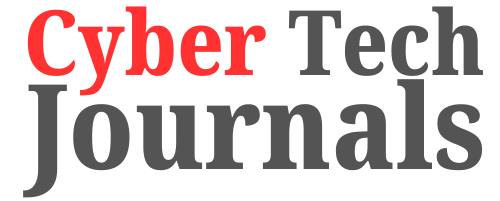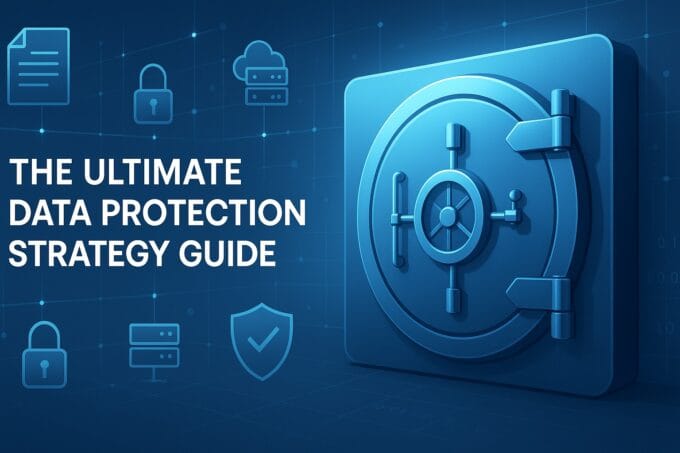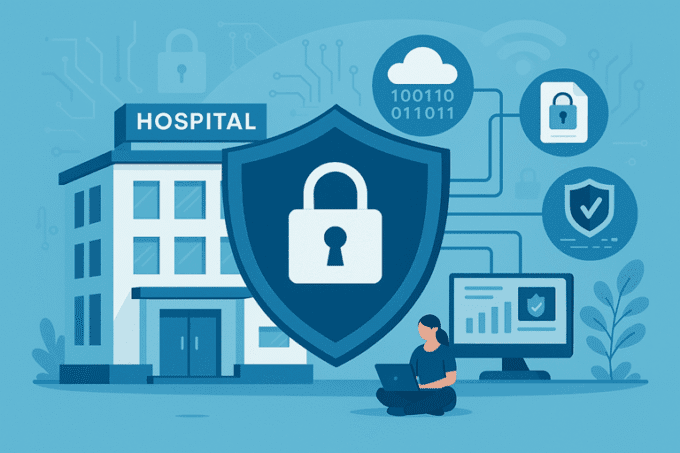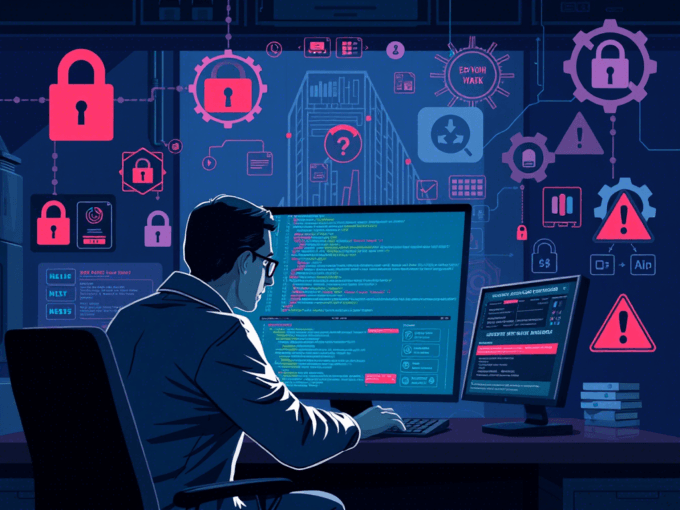In today’s fast-paced digital world, businesses of all sizes face a constant barrage of threats. From sneaky phishing emails to powerful ransomware attacks, the dangers lurking online are real and ever-evolving. It’s no longer enough to just have a strong lock on your office door; you need a formidable digital fortress to protect your valuable information, your customers’ trust, and your very future. As someone deeply invested in helping organizations navigate this complex landscape, I’ve seen firsthand the devastating impact a cyberattack can have. It’s not just about losing data; it’s about losing money, reputation, and sometimes, even the business itself. That’s why I believe understanding and implementing robust cybersecurity for businesses isn’t just a good idea—it’s an absolute necessity.
Key Takeaways
- Cybersecurity is for Everyone: Regardless of your business size, you’re a target. Protecting your digital assets is as crucial as protecting your physical ones.
- People Are Your First Line of Defense: Training your employees about common threats like phishing and strong password habits is one of the most effective security measures you can take.
- Layer Up Your Defenses: Don’t rely on just one security tool. A strong cybersecurity plan involves multiple layers, from secure networks to encrypted data and regular backups.
- Be Prepared for the Worst: Having a clear plan for what to do if a cyberattack happens (an incident response plan) can significantly reduce the damage and recovery time.
- Stay Updated and Adapt: Cyber threats change constantly. Regularly updating your systems, patching vulnerabilities, and staying informed about new dangers are vital for long-term protection.
Why Cybersecurity is No Longer Optional for Businesses
Think about it: almost every business today relies on computers, the internet, and digital information. From customer lists and financial records to product designs and marketing plans, much of what makes your business tick lives in the digital realm. This digital transformation, while offering incredible opportunities, also creates new vulnerabilities.
The Rising Tide of Cyber Threats
Cyberattacks are becoming more frequent, more sophisticated, and more costly. It’s not just big corporations that are targeted; small and medium-sized businesses (SMBs) are often seen as easier targets because they might have fewer resources dedicated to security.
Let’s look at some common threats:
- Ransomware: This is like a digital hostage situation. Attackers lock up your files and demand money (a ransom) to release them. If you don’t pay, or if they don’t unlock them even if you do, you lose access to critical data.
- Phishing: These are deceptive emails or messages that try to trick employees into revealing sensitive information (like passwords) or clicking on malicious links.
- Data Breaches: When unauthorized people gain access to sensitive or confidential information. This can expose customer data, trade secrets, or financial details. We’ve seen major companies like Oracle confirm data breaches in legacy cloud systems, showing that even large entities aren’t immune to these issues. You can learn more about what happened with Oracle’s data breach and what it means for businesses.
- Malware: Short for “malicious software,” this includes viruses, worms, and Trojans designed to damage, disable, or gain unauthorized access to computer systems.
The Real Costs of a Cyberattack
The impact of a cyberattack goes far beyond the immediate disruption. The costs can be staggering:
- Financial Losses:
- Cost of fixing systems and recovering data.
- Ransom payments (if applicable).
- Fines for non-compliance with data protection laws.
- Lost revenue due to downtime.
- Reputation Damage:
- Customers lose trust when their data is exposed.
- Negative publicity can scare away new clients and talent.
- It takes a long time to rebuild a damaged reputation.
- Legal and Regulatory Issues:
- Many industries have strict rules about protecting data (like GDPR, HIPAA). Breaches can lead to hefty fines and legal battles.
- Understanding certifications and their global role, as discussed in articles like this one on understanding certs, becomes crucial for compliance.
- Operational Disruption:
- Business operations can grind to a halt, leading to missed deadlines and unhappy customers.
- Employees might be unable to work effectively.
💡 Did You Know? A recent study found that the average cost of a data breach for small and medium-sized businesses can be hundreds of thousands of dollars, a sum that many cannot recover from.
Foundational Cybersecurity Strategies: Building Your Digital Walls
So, what can your business do to protect itself? It starts with a strong foundation. Think of it like building a house; you need solid ground and a sturdy frame before you add the fancy decorations.
1. Understanding and Managing Your Cyber Risks
Before you can protect yourself, you need to know what you’re protecting and from whom. This is where cyber risk management comes in. It’s about identifying, assessing, and treating the risks your business faces.
- Identify Your Assets: What data is most critical? What systems are essential for your operations? (e.g., customer databases, financial systems, intellectual property).
- Identify Threats: Who might want to harm your business digitally? (e.g., cybercriminals, disgruntled employees, competitors). What methods might they use?
- Assess Vulnerabilities: Where are your weaknesses? (e.g., outdated software, untrained employees, weak passwords).
- Evaluate Impact: If a threat exploits a vulnerability, how bad would it be? (e.g., minor inconvenience, major financial loss, business shutdown).
- Treat Risks: Develop strategies to reduce the risk. This could mean implementing new security tools, training staff, or changing processes.
To delve deeper into this crucial area, I highly recommend reading about what cyber risk management entails. It’s a fundamental step for any business.
2. Employee Training: Your Human Firewall
Your employees are often the first line of defense, but they can also be the weakest link if not properly trained. Human error plays a significant role in many cyber incidents.
Key Training Areas:
- Phishing Awareness: Teach employees how to spot suspicious emails, links, and attachments. Emphasize never clicking on unknown links or downloading files from unverified sources.
- Strong Passwords: Explain why complex, unique passwords are vital and how to create them (e.g., using passphrases or password managers).
- Social Engineering: Help them recognize attempts by attackers to manipulate them into revealing information or performing actions (e.g., urgent requests from “the CEO” to transfer money).
- Data Handling: Educate them on how to handle sensitive information securely, both digitally and physically.
- Reporting Incidents: Make sure employees know who to contact immediately if they suspect a cyberattack or security breach.
“Your employees are not just users; they are guardians. Invest in their knowledge, and they will become your strongest defense.”
3. Strong Password Policies and Multi-Factor Authentication (MFA)
This might seem basic, but it’s incredibly effective. Weak or reused passwords are an open invitation for attackers.
- Password Policies:
- Require long, complex passwords (at least 12-16 characters, mixing uppercase, lowercase, numbers, and symbols).
- Encourage the use of password managers.
- Discourage reusing passwords across different accounts.
- Multi-Factor Authentication (MFA): This adds an extra layer of security beyond just a password. Even if an attacker steals a password, they still need a second piece of information (like a code from a phone app, a fingerprint, or a USB key) to gain access. MFA is one of the single most impactful security measures you can implement.
4. Robust Network Security
Your network is the highway for all your data. Securing it is paramount.
- Firewalls: These act as digital gatekeepers, controlling what traffic can enter and leave your network. They block unauthorized access and malicious data.
- Intrusion Detection/Prevention Systems (IDS/IPS): These systems monitor network traffic for suspicious activity and can alert you to potential attacks or even block them automatically.
- Network Segmentation: Divide your network into smaller, isolated segments. If one part is breached, the attacker can’t easily jump to other critical areas.
- Virtual Private Networks (VPNs): For remote employees, VPNs create a secure, encrypted connection to your company network, protecting data in transit.
For a deeper dive into protecting your network, check out this guide on understanding network security in cybersecurity.
5. Data Encryption: Locking Up Your Secrets
Encryption scrambles your data so that only authorized individuals with the correct “key” can read it. It’s like putting your sensitive documents in a safe and then locking the safe.
- Data at Rest: Encrypt data stored on hard drives, servers, and cloud storage.
- Data in Transit: Encrypt data as it travels across networks (e.g., using HTTPS for websites, VPNs for remote access). This is especially important for protecting sensitive communications.
- New developments are constantly emerging, such as encrypted apps amid cyberattack concerns, highlighting the growing importance of this technology.
6. Regular Data Backups and Recovery Plans
What if, despite all your efforts, an attack still gets through? Or what if a natural disaster strikes? Having regular, tested backups is your ultimate safety net.
- 3-2-1 Rule: A good backup strategy follows the 3-2-1 rule:
- 3 copies of your data (the original plus two backups).
- 2 different media types (e.g., hard drive and cloud).
- 1 copy offsite (e.g., in a separate physical location or a secure cloud service).
- Test Your Backups: Don’t just make backups; regularly test them to ensure you can actually restore your data when needed.
- Isolate Backups: Ensure your backups are isolated from your main network so that ransomware can’t encrypt them too.
Advanced Cybersecurity Measures: Strengthening Your Defenses
Once you have the basics down, it’s time to consider more advanced strategies that provide deeper protection.
1. Vulnerability Management and Patching
Software, operating systems, and applications often have weaknesses (vulnerabilities) that attackers can exploit. Vulnerability management is the process of finding and fixing these weaknesses.
- Regular Scanning: Use tools to scan your systems for known vulnerabilities.
- Patch Management: Apply software updates and security patches promptly. Vendors release these patches specifically to fix security flaws. Delaying updates leaves you exposed.
- System Hardening: Configure systems to be as secure as possible by disabling unnecessary services and closing unused ports.
This proactive approach is crucial. You can learn more about vulnerability patch management and hardening to keep your systems secure.
2. Access Control and Zero Trust Architecture
Who has access to what, and why? This is the core of access control.
- Principle of Least Privilege (PoLP): Give employees only the minimum access rights they need to do their job, and no more. This limits the damage an attacker can do if they compromise an account.
- Role-Based Access Control (RBAC): Assign access based on job roles, making it easier to manage permissions.
- Zero Trust Architecture: This is a modern security model built on the idea of “never trust, always verify.” It means that no user or device, whether inside or outside the network, is automatically trusted. Every access request is verified. This significantly reduces the risk of insider threats and lateral movement by attackers. Explore more about Zero Trust Architecture to understand its transformative power.
3. Endpoint Security
An “endpoint” is any device connected to your network, like a laptop, desktop, smartphone, or server. Securing these individual devices is crucial.
- Antivirus/Anti-Malware: Essential software to detect and remove malicious programs.
- Endpoint Detection and Response (EDR): More advanced than traditional antivirus, EDR solutions continuously monitor endpoints for suspicious activity and can respond to threats in real-time.
- Device Encryption: Ensure all company laptops and mobile devices are encrypted so data is protected if a device is lost or stolen.
4. Incident Response Plan: When Things Go Wrong
No matter how good your defenses, the possibility of a breach always exists. Having a well-defined incident response plan is like having a fire drill for a cyberattack. It outlines exactly what to do when an incident occurs.
A good plan includes:
- Detection: How will you know an attack is happening?
- Containment: How will you stop the attack from spreading? (e.g., disconnecting affected systems).
- Eradication: How will you remove the threat? (e.g., cleaning infected systems).
- Recovery: How will you restore operations? (e.g., using backups).
- Post-Incident Analysis: What lessons can be learned to prevent future attacks?
Having an automated cybersecurity incident response strategy can dramatically reduce the time it takes to react and recover from an attack, minimizing damage.
5. Threat Detection and Monitoring
You can’t protect what you can’t see. Continuous monitoring helps you spot suspicious activity before it escalates into a full-blown crisis.
- Security Information and Event Management (SIEM): These systems collect security logs from across your network and applications, helping to identify patterns that might indicate an attack.
- Security Operations Center (SOC): A dedicated team (in-house or outsourced) that uses SIEM and other tools to monitor for threats 24/7.
- AI-Powered Tools: Artificial intelligence (AI) is revolutionizing threat detection by identifying anomalies and predicting potential attacks faster than humans. You can find out more about AI threat detection tools that actually work.
- Open-Source Tools: Many effective open-source options are available for threat detection, offering powerful capabilities without the hefty price tag. Exploring open-source threat detection tools can be a cost-effective way to enhance your security posture.
6. Compliance and Governance
Depending on your industry and where you operate, you might be subject to specific regulations regarding data privacy and security (e.g., GDPR, HIPAA, PCI DSS).
- Understand Your Obligations: Know which laws and standards apply to your business.
- Implement Controls: Put in place the necessary technical and organizational measures to meet these requirements.
- Regular Audits: Conduct internal and external audits to ensure ongoing compliance. Non-compliance can lead to severe penalties and damage to your reputation.
Building a Cybersecurity Culture: Everyone’s Responsibility
Cybersecurity isn’t just an IT problem; it’s a business problem, and it requires a company-wide solution.
- Leadership Buy-in: Security needs to start from the top. When leaders prioritize cybersecurity, it sends a clear message to the entire organization.
- Continuous Education: Cybersecurity training shouldn’t be a one-time event. Regular refreshers, newsletters, and simulated phishing attacks keep employees vigilant.
- Make it Accessible: Explain security concepts in plain language. Avoid jargon. Make it easy for employees to understand why certain practices are important.
- Positive Reinforcement: Celebrate security successes and encourage employees to be proactive about reporting suspicious activity.
“Cybersecurity is a team sport. Every single person in your organization has a role to play in protecting your digital assets.”
Choosing the Right Cybersecurity Partner and Tools
For many businesses, especially SMBs, building a full in-house cybersecurity team can be challenging and expensive. This is where external help comes in.
- Managed Security Services Providers (MSSPs): These companies specialize in providing cybersecurity services. They can offer expertise, tools, and 24/7 monitoring that you might not be able to achieve internally.
- Key Considerations When Choosing a Partner:
- Expertise: Do they have experience in your industry?
- Services Offered: Do they cover all your needs (monitoring, incident response, compliance, training)?
- Reputation: Check references and reviews.
- Cost: Ensure their services fit your budget.
- Communication: How will they communicate with you during an incident?
When selecting tools, whether for threat detection, vulnerability management, or encryption, consider:
- Integration: Do they work well with your existing systems?
- Scalability: Can they grow with your business?
- Ease of Use: Are they manageable for your team?
- Vendor Support: What kind of support do they offer?
The Future of Cybersecurity for Businesses: Staying Ahead of the Curve
The digital landscape is constantly shifting, and so are the threats. What’s effective today might not be enough tomorrow.
- Artificial Intelligence (AI) and Machine Learning (ML): These technologies are being used more and more to automate threat detection, analyze vast amounts of data, and even predict attacks. They also pose new challenges as attackers leverage AI too.
- Automation: Automating security tasks like patching, incident response, and compliance checks helps businesses react faster and reduce human error.
- Cloud Security: As more businesses move to the cloud, securing cloud environments becomes increasingly critical. This involves understanding shared responsibility models with cloud providers.
- IoT Security: The growing number of internet-connected devices (Internet of Things) introduces new attack surfaces that need to be secured.
Staying informed about these trends and adapting your strategies is key to long-term resilience.
Conclusion: Your Business’s Digital Shield
In the digital age, cybersecurity for businesses is not a luxury; it’s a fundamental pillar of success. From protecting sensitive data and maintaining customer trust to ensuring business continuity and avoiding costly penalties, a strong cybersecurity posture is indispensable. I urge every business leader to make cybersecurity a top priority, not just an IT department’s concern.
By implementing foundational strategies like employee training, strong passwords, and regular backups, and then building upon them with advanced measures like vulnerability management, incident response plans, and zero trust principles, you can build a formidable digital shield for your organization. Remember, the goal isn’t just to prevent attacks (though that’s ideal); it’s also about being resilient, prepared to respond, and able to recover quickly when challenges arise. Invest in your cybersecurity today, and safeguard your business’s future in this dynamic digital world.
FAQs on Cybersecurity for Businesses
Q1: What’s the first step to improve cybersecurity in a small business?
Start with a risk assessment and define a cybersecurity policy based on identified gaps.
Q2: How often should staff receive cybersecurity training?
At least annually, with refresher courses and phishing simulations quarterly.
Q3: Do small businesses need a dedicated cybersecurity team?
Not necessarily. Managed security providers (MSPs) can offer cost-effective protection.
Q4: What tools are essential for a small business’s cybersecurity stack?
MFA, EDR, firewalls, backup solutions, and email filtering.
Q5: How can businesses recover quickly from a cyberattack?
With a solid incident response plan, offsite backups, and clear communication protocols.

















Leave a comment